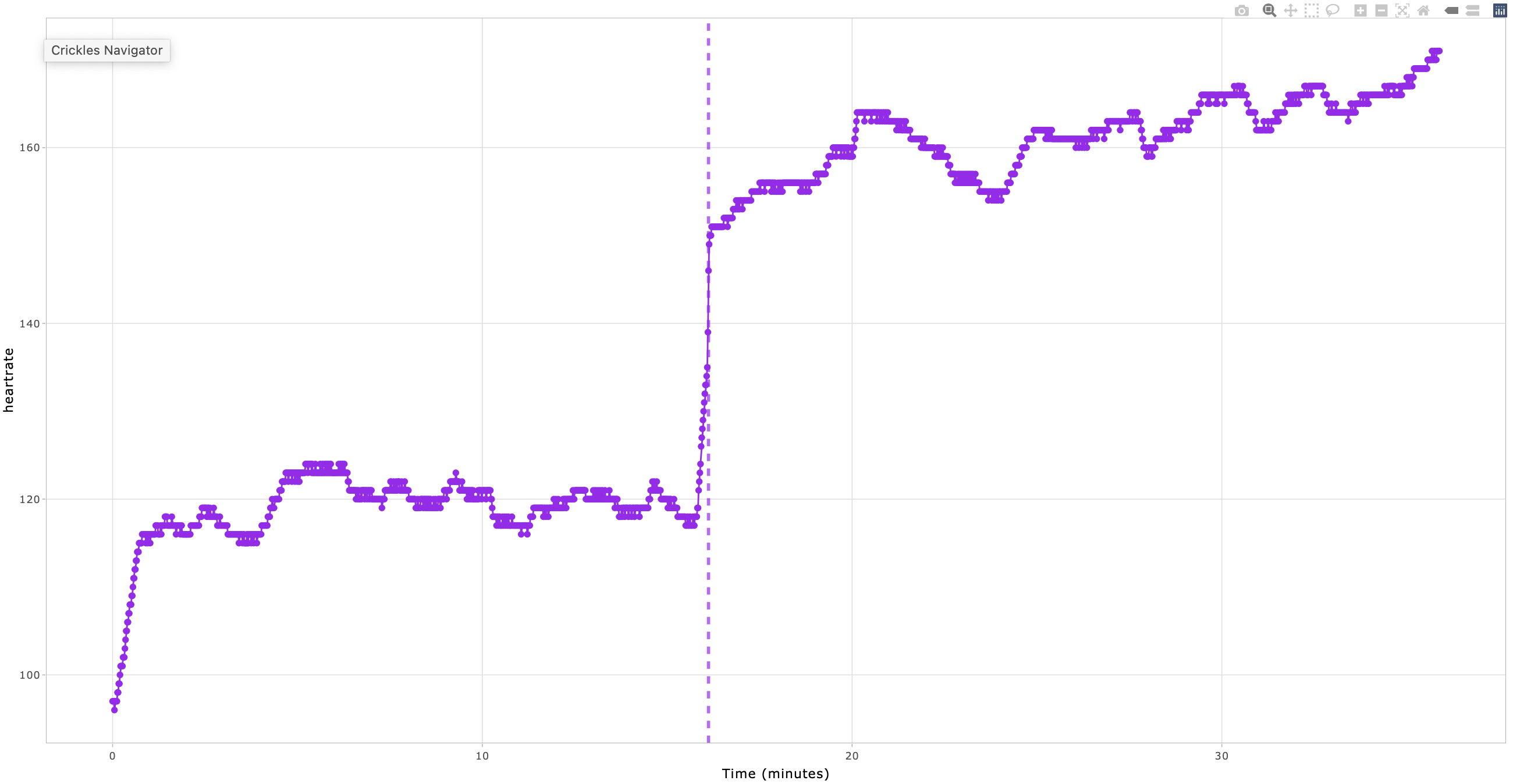Sports watches and step jumps in heart rate
Identifying the lag
Heart rate readings from watches with optical heart rate monitors (OHM’s) are widely reported - especially by fit, active users who push themselves during exercise - to be less reliable than chest straps. This is why in our paper on detecting arrhythmia we restrict the analysis to cycling, where the use of chest strap is far more prevalent.
One frequent issue is that a sports watch can take several minutes to establish an adequate skin contact and/or for perfusion to stabilise so that there is a good optical signal that the watch can process. Then, a typical heart rate chart might look like this:

Here, after an initial quick rise at the start, it is most probable that the athlete’s heart rose steadily to a plateau above 150 bpm. It is very unlikely that the heart rate suddenly spiked at around 16 minutes, as recorded by the watch (and the athlete whose run this was does not believe that it did).
Crickles now detects such patterns and assigns them a Regularity value of OHM_jump. It also locates the time when the jump occurred. This is most clearly visible as the dotted vertical line on the heart rate chart, as shown in the image above, but it can also be seen on the Activities page, along with the time at which the OMH becomes reliable, which is called Sensor_Warmup (16M 7S in this example). It can also be seen on the Timeline page, where OHM_jumps are indicated with a deep blue dot in the middle of affected activities:

If you see this pattern frequently you can try one of the commonly cited recommended fixes such as wearing your watch a notch tighter and above the bony bump on your wrist and warming up before you start your activity. In any case aggregate heart rate metrics for such activities will be wrong insofar as the heart rate before the jump is understated. Crickles will adjust Cardiac Stress Score (CSS) modelling to account for this, when detected, in the next revision.